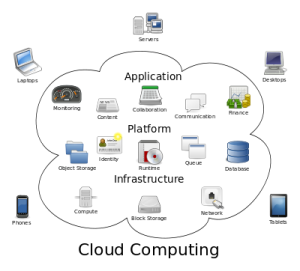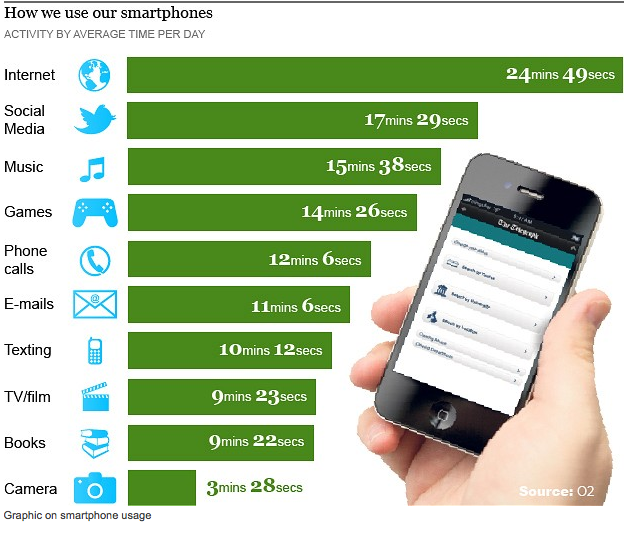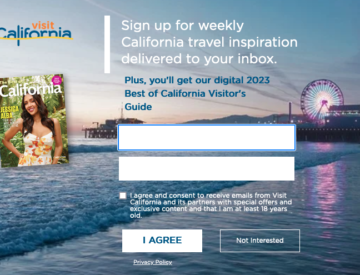 It’s already that time of year when strategic planning and budgeting are in their final stages for 2013. But what are some of the major shifts that can be expected next year, and how should marketers align accordingly?
It’s already that time of year when strategic planning and budgeting are in their final stages for 2013. But what are some of the major shifts that can be expected next year, and how should marketers align accordingly?
While I don’t own a magic crystal ball, here’s my personal take on what I foresee as trends set to either continue or explode in coming months, in particular as it pertains to the tourism & hospitality industry.
1. TABLETS
It’s no coïncidence that Apple recently launched its iPad Mini while Samsung keeps coming up with variations of its popular Galaxy models in this device category. Google competes with its Nexus 7 while even Microsoft decided to join the party with its highly anticipated Surface.
Tablets are chipping away market share from desktops and laptops, with an estimated 90 million consumers in the US to own one by 2014. Customer behaviors related to these devices have everything to appeal to travel marketers: more time spent on web pages, higher conversion rates… what’s there not to like?
2. CLOUD COMPUTING
Have you noticed how much work now gets done through cloud services? I use Hootsuite as my social media dashboard, get all my accounting done with a service like Freshbooks, or will share documents with friends and colleagues via Dropbox, Google Drive or project management services like BaseCamp.
Companies are also seeking to diminish email clutter through internal collaboration services like Yammer, which tends to confirm there is growing confidence in using cloud computing while maintaining privacy and security concerns under control.
3. BIG DATA
This one was in many Marketing trends for 2012 articles about a year ago, and guess what: it will most likely be a trend for 2014 too, since this is no easy cupcake! In essence, with the multiplication of customer touch points comes the increasing challenge of gaining a “single view of the client”.
That is, a quality understanding of customer preferences, transactional background, social media and mobile interactions, etc. Making sense of the subsequent data becomes an analytical feat, akin to drinking water from the firehose. For more on this, read EyeforTravel’s post
4. MOBILE PAYMENT
Many people were disappointed when the new iPhone 5 was unveiled without any mobile payment feature, in particular since the rumor had it incorporating NFC technology. Nevertheless, Apple did include its Passbook application on its iOS 6 platform, while Twitter’s co-founder Jack Dorsey is pushing forward with Square, a mobile credit card reader that is now being introduced across Canada, or while companies go their own way, like CIBC and Rogers recently launching their mobile payment initiative.
It’s a bit of a Wild West out there, with retailers doing their own thing, Google Wallet, PayPal or even Groupon rumored to offer its own mobile payment solution. Who will come out as the leader? And what will it mean in terms of data capture, privacy matters and marketing opportunities?
5. MOBILE MARKETING
Smartphones represent more than 50% of new mobile devices being purchased, and the growth of connected devices will soar throughout 2013. In fact, Ericsson estimates there will be over 50 billion connected devices in circulation by 2020, including laptops, tablets and smartphones.
In North America, 2013 shall mark the first time that online access is greater from mobile devices than desktop or laptop. According to a recent study by UK telecom provider O2, it seems we hardly ever use our smartphones for calling anymore!
What is the impact of this paradigm shift? Among other things: the need to optimize newsletters for mobile reading, to optimize brand web sites through responsive design or mobile-first approaches, building mobile AdWords campaigns, etc.
Not to mention the implications in location-based marketing and applications, from Foursquare to daily deals. At the end of the day, we now need to realize that Mobile is not a channel, it’s a way of life!
6. CONTENT MARKETING
“Content marketing is the new advertising”
As brands embrace social media and its potential to engage in meaningful conversations with their loyal fan base and potential clients alike, the new mantra is now that “Brands need to act as Publishers”. In fact, content marketing is the new advertising. Coca Cola is perhaps one the best examples of a brand that actively pursues getting its message across through its owned and shared media, thus allowing it to reduce its investments in traditional paid media.
Blogs, social media, newsletters, webinars, ebooks, photo-sharing, videos or case studies are just a few of the sharpest tools brands ought to invest in, moving forward in this rapidly evolving online ecosystem.
7. SOCIAL ENTERPRISE
Ever since social media became an asset in the marketing tool kit, for many organizations that’s where accountability resided. Fortunately, brands are now realizing and structuring themselves in order to better reflect the fact that social media is not a marketing function: it’s a business function.
Different stakeholders may then be involved in the shaping of multifunctional teams in order for organizations to thrive in this social environment: customer service, human resources, communications, sales, research, legal, IT, etc.
8. PHOTO-SHARING
2012 was without a doubt the year that saw photo-sharing sites coming of age, in particular Pinterest and Instagram. Increasing users on both platforms mean first-mover opportunities, as many destinations, hotels and tourism-related organizations have demonstrated recently.
Copycats are bound to arise, but 2013 will certainly provide us with new players on this field. Place your bet on at least one mobile-native solution to rise to fame next year, with a hefty price tag for acquisition…
9. STRATEGIC SOCIAL MEDIA
This could be seen as a segue to point #7 above, but in fact it’s more about social media becoming strategic, rather than tactical. Many brands have set up accounts or pages on Twitter, Facebook, Google+, Pinterest and LinkedIn. Now what? Well, trial and error is fine up until a certain point.
Moving forward, though, brands will need to take a few steps back and make sure resources are allocated according to priorities and corporate objectives. In other words, what’s the strategy? While this should have come in the first place, it’s never too late to reassess the situation and tweak tactics according to a revisited strategy.
10. EVERYTHING IS NOT ALWAYS ONLINE
Not sure if this one is truly a trend for 2013 or perhaps some wishful thinking on my part, but companies need to be clear about their online endeavors. Yes, a vast majority of clients are moving online or towards smartphones and tablets, but there is equally as many folks who prefer to use a call center or deal with people in real life.
In the travel industry, this is particularly true as travel agencies and intermediaries continue to play an important role in the purchase decision process. Not to mention the “connected-ness” fatigue some people come to experience, whereby they can wish to have a week’s holiday without any digital connection to truly break-away from work and everyday life.
11. DIGITAL DESTINATIONS
Yet, as the devil’s advocate to point #10, there ARE some folks who wish to stay connected throughout their travels. How can destinations adapt and provide services accordingly? Is the era of the full-blown website over, or will destinations adapt content deliver according to personas, types of interests, i.e. foodies, culture junkies, sporting events, or perhaps even types of preferred device?
Once at the destination, do you really need to access all the information once a destination web site? How can location-based applications come into play and add value?
Read: What it takes to become a digital destination
12. SOCIAL CROWDSOURCING
Crowd-sourcing through social media platforms is nothing new but remains very much under-utilized. Old habits die hard, and many organizations still conduct expensive focus groups on a regular basis when they could seek out equally relevant insights from Facebook fans or newsletter subscribers.
Starbucks has been a trailblazer in this area with its MyStarbucksIdea.com site seeking feedback from its customers. Or even Melia Hotels, who developed “social suites” in its new hotels based on feedback from its Facebook fans. Read more on this, here
13. THE END OF OTA DOMINANCE?
Last but not least: will 2013 represent the tipping point when online travel agencies start losing steam in their worldwide travel distribution dominance? In the hotel industry, revolt is brewing as many industry leaders are trying to steer away from the dependence to Expedia, Priceline, and their subsidiaries, i.e. Bookings.com, Hotels.com, etc.
With Expedia’s recent Traveler Preference Program said to cost an estimated $2.1 billion, will this be the final straw? Not to mention that in Europe, leading hotels have begun lobbying Google to stop OTAs from bidding on their properties in AdWords campaigns without prior consent.
There you have it. 13 marketing trends for 2013, in particular for the travel & hospitality industry but also for most brands active online. Please comment below if you disagree or would like to add to these predictions. Cheers!











Leave a Reply